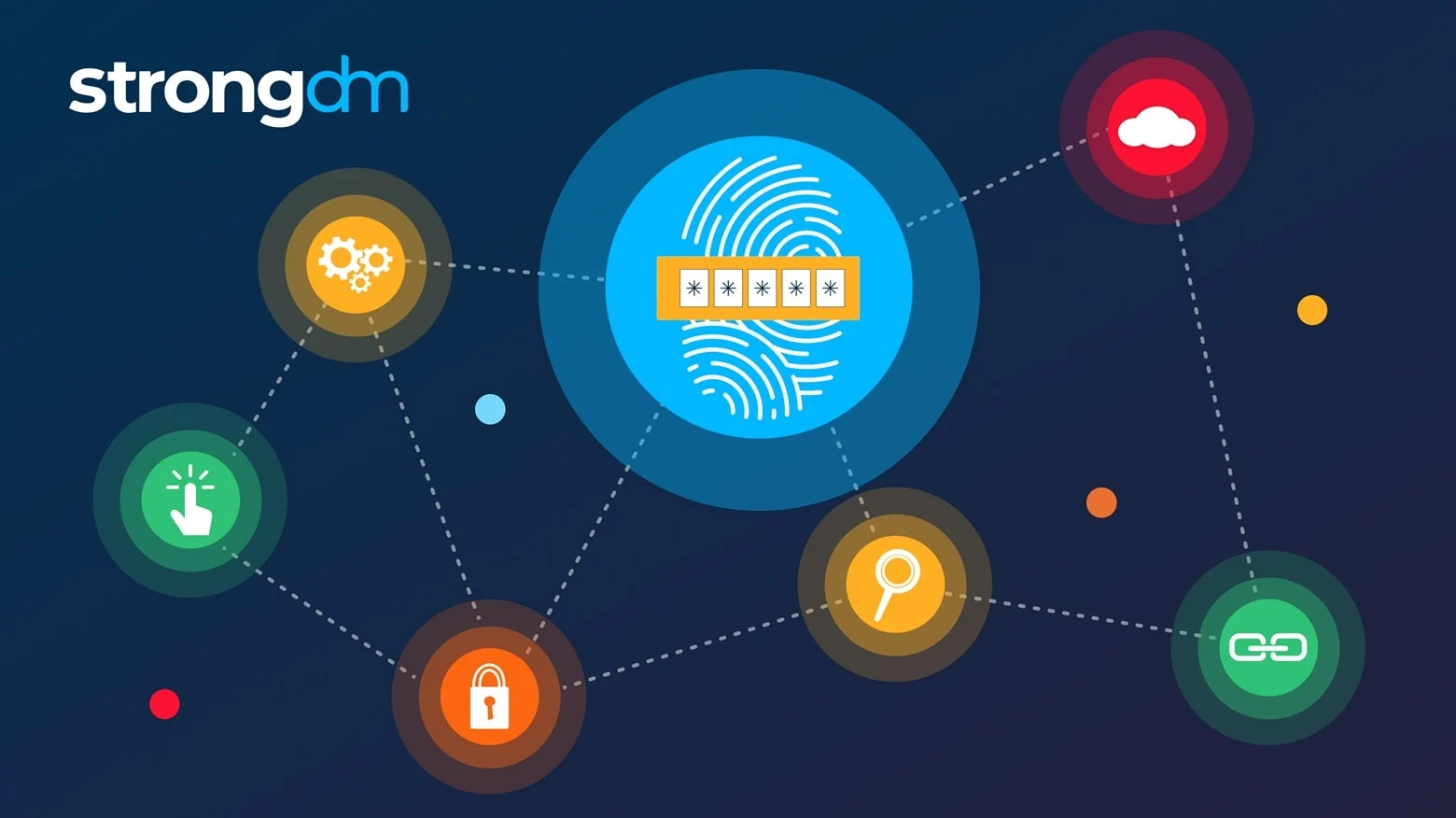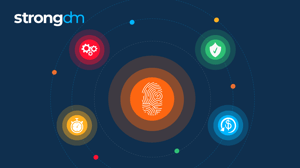Identity and Access Management Implementation: 8-Step Plan


Written by
John MartinezLast updated on:
October 17, 2025Reading time:
Contents
Built for Security. Loved by Devs.
- Free Trial — No Credit Card Needed
- Full Access to All Features
- Trusted by the Fortune 100, early startups, and everyone in between
Identity and access management (IAM) is a collection of technologies, policies, and procedures designed to guarantee that only authorized individuals or machines can access the appropriate assets at the appropriate times. While it is an effective approach to enterprise security, IAM implementations are complex undertakings. If not done correctly, it can create security gaps that leave your organization at increased risk of a breach. Taking a measured approach will ensure your deployment is seamless and successful.
This article will guide you through the eight steps to a successful identity and access management implementation plan so your security is airtight.
What Is the IAM Implementation Process?
IAM implementation is the process of establishing an identity and access management system and integrating it into your existing IT infrastructure. It involves identifying your organization’s needs, choosing the right IAM solution, planning the implementation, executing the plan, and continuously monitoring and improving the system.
Key Components of an Effective IAM Platform
Here’s a closer look at the key components of an effective IAM platform that work together to ensure secure access to resources and protection of sensitive data:
- Authentication: This verifies the identity of users attempting to access resources. It typically involves username and password authentication, and multi-factor authentication methods such as biometrics or tokens.
- Authorization: Authorization determines what resources users are allowed to access and what actions they can perform through the use of access control lists (ACLs) or role-based access control (RBAC).
- Account lifecycle management: This component handles the creation, modification, and deletion of user accounts throughout their lifecycle, invoking and revoking access as needed.
- Audit and compliance: Auditing and tracking user activity ensures compliance with internal policies and external regulations, providing a detailed trail of who accessed what resources and when.
- Single sign-on (SSO): SSO allows users to authenticate once to access multiple resources. This improves the user experience and reduces the risk of password-related security breaches.
💡 Pro Tip: You can find these features in point solutions, but piecing multiple solutions together can create security gaps. To get the full advantage of IAM, security teams require a comprehensive access management platform like StrongDM’s Zero Trust Privileged Access Management (PAM) Platform, which manages authentication and authorizations to critical infrastructure while recording every session in a single unified query log to simplify evidence collection and compliance.
8 Identity and Access Management Implementation Steps
A well-executed IAM implementation results in improved security, increased productivity, and enhanced regulatory compliance. Let's look at the eight steps to an IAM implementation that delivers the results you need.
1. Determine your business goals
Before you begin your identity and access management implementation plan, it’s important to define your business goals. Analyze your organization's current IT infrastructure and security policies to identify gaps or issues that IAM can resolve. Engage with key stakeholders, such as IT staff, department heads, and legal and compliance teams, to gather input and align with the needs of the business.
2. Evaluate your existing IT landscape
Next, assess your IT environment’s infrastructure, applications, and data repositories to identify systems needing secure access control. Consider your user types—employees, contractors, partners, and customers—to understand their access needs so you can make sure your scope is comprehensive and addresses the variety of ways that stakeholders will gain access.
3. Decide between cloud, on-premises, or hybrid deployments
Your deployment type is a key decision during IAM implementation. Cloud options offer scalability, flexibility, and cost savings, while on-premises deployments provide full control over infrastructure. Hybrid deployments combine the benefits of both. Consider factors like cost, security, compliance, scalability, and integration capabilities when selecting your deployment.
4. Choose the right IAM solution for your organization
When selecting an IAM solution, consider factors like ease of use, integration, vendor reputation, customer support, and pricing. Prioritize solutions that offer a comprehensive set of features such as authentication, authorization, account lifecycle management, audit and compliance, and SSO. Ensure the chosen solution is scalable and can integrate with other systems as your organization grows and evolves.
💡 Pro Tip: StrongDM provides users with comprehensive Zero Trust PAM that includes the security of Privileged Access Management (PAM) with more flexibility, putting you back in control of your business with the least privileged access by default.
5. Assess IAM implementation costs
Implementing an IAM solution involves costs like software licenses, hardware, implementation, training, and ongoing maintenance and support. Collaborate with the IAM provider to understand any additional costs, including user numbers, IT complexity, and customization needs, to plan your budget and avoid surprises down the road.
6. Outline an identity and access management implementation plan
Next, outline your IAM implementation plan. This will be your roadmap for the implementation process. Identify key milestones, break them into tasks, assign responsibilities, set timelines, and communicate updates to stakeholders to keep them informed and engaged throughout the implementation process.
7. Execute the implementation
Now it’s time to execute your identity and access management implementation by deploying, configuring, and integrating it into your existing IT infrastructure, working closely with your solution provider and any partners. Conduct comprehensive testing, address any issues, and provide training to IT personnel and end users. Communicate the system's benefits to stakeholders and address any concerns or resistance that may arise.
8. Continuously analyze and improve
Your journey doesn’t end once your IAM system is implemented. Enact a plan of continuous analysis and improvement, regularly reviewing system logs, user access patterns, and security incidents for vulnerabilities. Stay current on security best practices, industry standards, and regulatory requirements for compliance and conduct audits and penetration testing to validate the system's effectiveness.
💡 Pro Tip: Most legacy access solutions require users to perform manual observation and analysis, but StrongDM provides total visibility and observability across your entire infrastructure, storing all access and activity logs, capturing every session, query, and command, and automating evidence collection so you can conduct continuous analysis all in one place.
Best Practices for a Smooth IAM Implementation Process
You now know the steps to an IAM implementation, but this is not enough to ensure your security is comprehensive. IAM implementations should be approached with several best practices and guidelines in mind to ensure no stone is left unturned.
- Start with a pilot project: Consider a small-scale project to test the IAM solution before rolling it out organization-wide, so you can identify and address any issues or challenges early on.
- Involve key stakeholders: Engage stakeholders throughout implementation, including IT personnel, department heads, legal and compliance teams, and end users, to ensure you have their buy-in and support.
- Establish a governance framework: Develop a framework that defines roles and responsibilities, policies, procedures, and guidelines for ongoing management and administration.
- Provide comprehensive training: Training IT personnel and end users on your new processes and systems will ensure they can use the IAM system effectively and securely.
- Regularly review and update access rights: Regular access rights reviews confirm that users have the least amount of access they require. Use the automated workflows and native IdP integrations available in StrongDM to add and remove access, simplifying and securing the process.
Easy IAM Implementations with StrongDM
Implementing an IAM solution is a complex process, especially for large enterprises with multiple systems and resources. Planning, executing, selecting, and deploying the right IAM for your organization involves a lot of work and can eat up considerable time and resources.
One way to ensure your identity and access management implementation goes smoothly is to have a partner in the process. StrongDM is a comprehensive Dynamic Access Platform that secures access to your most critical infrastructure. StrongDM offers Continuous Zero Trust authorization, providing real-time access and operations monitoring across your infrastructure while enforcing contextual access policies. This gives you granular authorization and control over resources and data, so the right people have the right access to the right assets.
See how we can help you with a risk-free demo of StrongDM today.
Next Steps
StrongDM unifies access management across databases, servers, clusters, and more—for IT, security, and DevOps teams.
- Learn how StrongDM works
- Book a personalized demo
- Start your free StrongDM trial

Categories:

About the Author
John Martinez, Technical Evangelist, has had a long 30+ year career in systems engineering and architecture, but has spent the last 13+ years working on the Cloud, and specifically, Cloud Security. He's currently the Technical Evangelist at StrongDM, taking the message of Zero Trust Privileged Access Management (PAM) to the world. As a practitioner, he architected and created cloud automation, DevOps, and security and compliance solutions at Netflix and Adobe. He worked closely with customers at Evident.io, where he was telling the world about how cloud security should be done at conferences, meetups and customer sessions. Before coming to StrongDM, he lead an innovations and solutions team at Palo Alto Networks, working across many of the company's security products.
You May Also Like





